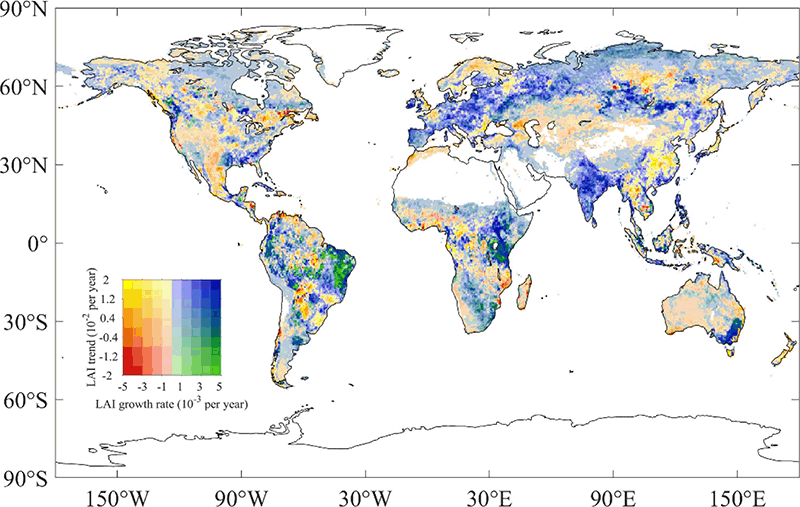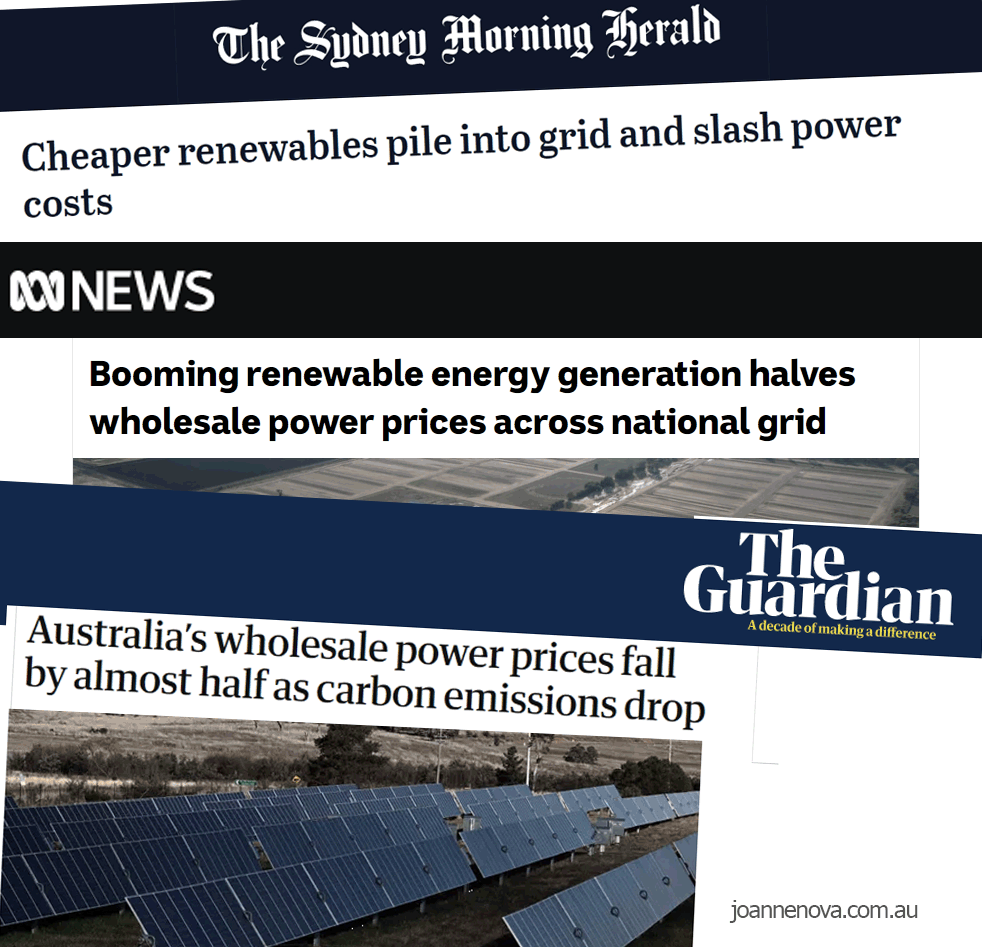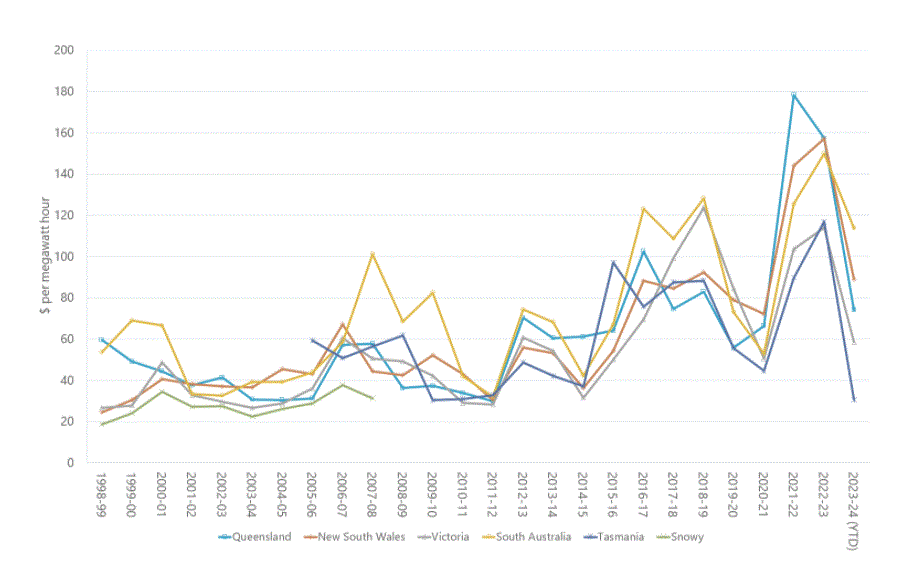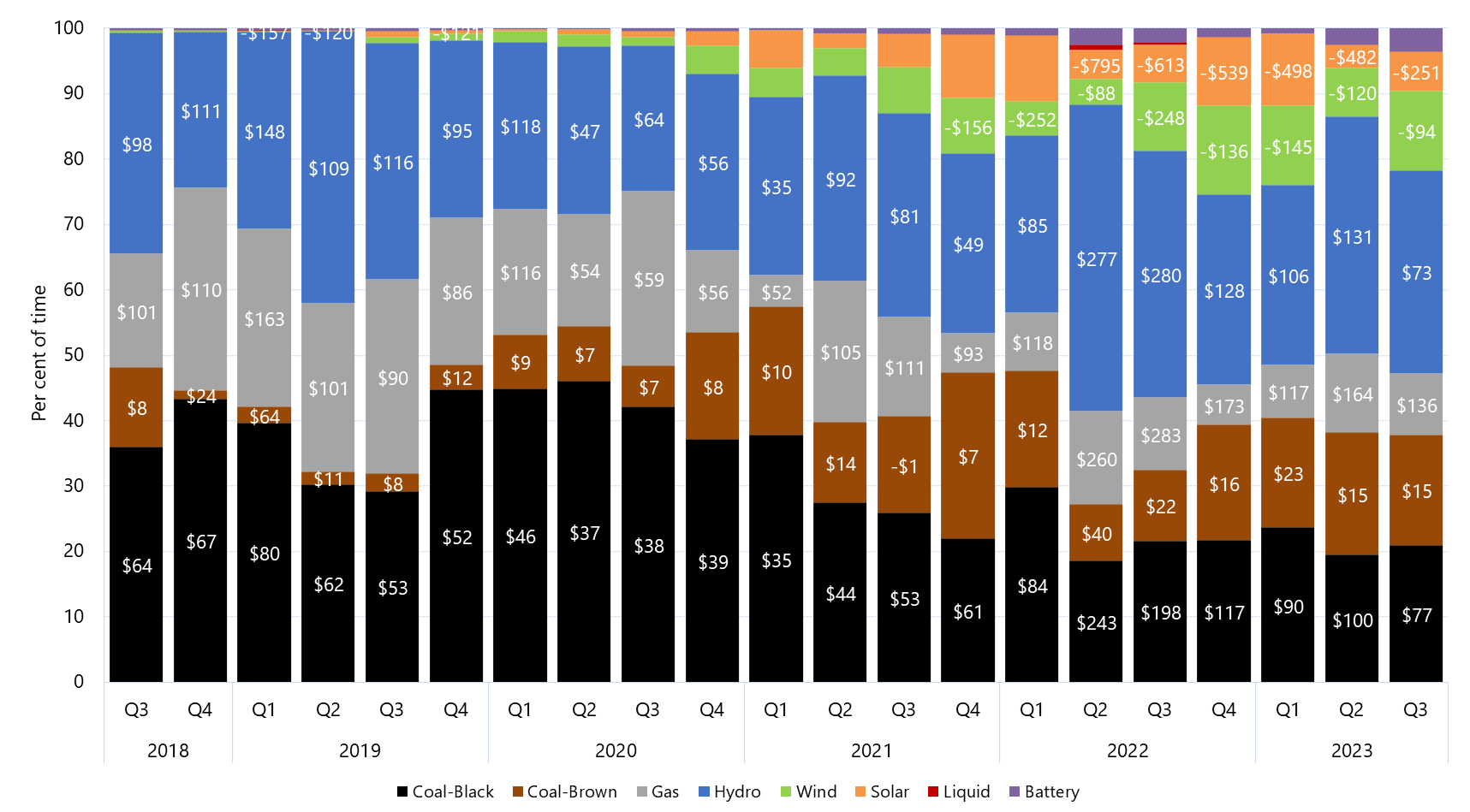|
|
||||
|
A team of psychologists were so sure “climate deniers” deceive themselves for selfish reasons that they ran three experiments with four thousand people, only to find they were completely wrong. The researchers figured that those who do not accept that coal makes storms and floods must be motivated by their desire to keep on polluting, or flying, or feeling warm, and so they lie to themselves about the science in order to feel OK about it. (A bit like academics must do when it turns out they get paid well, but don’t know their research topic at all, maybe?) It must have been quite the shock when Zimmermann and Stötzer were proved wrong on every single experiment. They even tried to bribe skeptics with $20 cash rewards and it still wasn’t enough. Why are people climate change deniers? Study reveals unexpected resultsDo climate change deniers bend the facts to avoid having to modify their environmentally harmful behavior? Researchers from the University of Bonn and the Institute of Labor Economics (IZA) ran an online experiment involving 4,000 US adults, and found no evidence to support this idea. The authors of the study were themselves surprised by the results. One hypothesis is that these misconceptions are rooted in a specific form of self-deception, namely that people simply find it easier to live with their own climate failings if they do not believe that things will actually get all that bad. “We call this thought process ‘motivated reasoning,’… The only thing the study showed was the dire state of psychological science. For starters, researchers were oblivious to their own prejudice and incompetent background research. They can’t define a climate change denier in any scientific sense, it’s not a label of a group of homo-sapiens who think the climate never changes, it’s just a petty kindergarten insult designed to fool, well… psychologists. And it works. If they had spent five minutes reading skeptical web-sites they’d know that half the population have good reason to be skeptical of unaudited and unaccountable foreign committees which rely on broken models. In fact if they were looking for “motivated reasoning” in the climate debate (and they say they were) then most of it is on the believer side, where people might be motivated by billions of dollars in government grants. Zimmermann and his colleague Lasse Stötzer told people they could decide where a $20 donation went — they could choose which climate charity would get the cash, or they could keep it themselves. The “control” group weren’t allowed to keep the cash themselves. Basically 41% to 44% of the crowd kept the money. But amazingly more than 50% still gave the cash to a climate charity. Humans are nice people, really. I mean, they could all have kept the cash, and most didn’t. Presumably no one wants to look too scroogey in front of researchers, but some people know climate charities are pagan groups designed to cheat money from the poor and give it to billionaires — so it’s better to look like a scrooge than feed the machine. At the center of the experiments was a donation worth $20. Participants were allocated at random to one of two groups. The members of the first group were able to split the $20 between two organizations, both of which were committed to combating climate change. By contrast, those in the second group could decide to keep the $20 for themselves instead of giving it away and would then actually receive the money at the end. “Anyone keeping hold of the donation needs to justify it to themselves,” says Zimmermann, … “One way to do that is to deny the existence of climate change.” In another variation, participants could pick either a skeptical video or a believer one, and the researchers hoped somehow it would show people who kept the money would choose the skeptical video to reassure themselves that they were right. But as it happens, about 51% of the control group wanted to see “the skeptical side” of this 30 year long boring debate, which was slightly more than the test group. Foiled. Another null result. It was good, bad, nothing-news really — another piece of useless academic study, and the experts don’t know how to convince anyone: This finding was also borne out in two further experiments. “In other words, our study didn’t give us any indications that the widespread misconceptions regarding climate change are due to this kind of self-deception,” says Zimmermann, summing up his work. On the face of it, this is good news for policymakers, because the results could mean that it is indeed possible to correct climate change misconceptions, simply by providing comprehensive information. If people are bending reality, by contrast, then this approach is very much a non-starter. All five treatments found nothing, even though there was money to be had. They even sliced and diced the data according to income to see if poorer people were more likely to keep the money and then “become” a skeptic, but they couldn’t even find a link there. We do not observe that more financially constrained participants choose the selfish action more frequently in reaction to our treatment variation. Contrary to our hypotheses, we find no evidence that motivated cognition can help to explain widespread climate change denial and environmentally harmful behaviour. It never even occurred to Zimmermann and Stötzer that their life’s work was to figure out how to force an absurd political fantasy on to half the population. Do windmills today stop storms in 2100AD? Will solar panels stop the oceans rising? Is it possible that one trace gas controls the global temperature when water vapor is far more important, 10 to 100 times as abundant, and subject to rapid change on a minute by minute basis? Is it possible that the sun and space weather has an effect on our climate through the solar wind, the magnetic field, the heliospheric plane, cosmic rays, or spectral changes. And lastly, just in case these 2,000 people (or 0.0001% of US voters) were influenced by watching one skeptical video the researchers had to “debrief” them. To mitigate the ethical concern about showing some participants a video casting scepticism about climate change by presenting factually wrong information, we added a short debriefing for all participants at the end of the experiment (Supplementary Information). You know it’s a cult… h/t Willie Reference:Lasse S. Stoetzer, and Florian Zimmermann, (2024) “A representative survey experiment of motivated climate change denial” by 2 February 2024, Nature Climate Change. DOI: 10.1038/s41558-023-01910-2 Image by Mystic Art Design from Pixabay
By Jo Nova Farmers all over the world are bearing the brunt of the massive infrastructure and land needed to collect low density, unreliable energy. They’re being forced to take part in a giant pagan experiment to try to change the global weather and with virtually no consultation. No wonder they’re angry. In Australia there are more than 1,000 renewable projects in the pipeline and people in the regions are furious. They’re coming to Canberra at 10am on Tuesday. Professor Peter Ridd will be there. Don’t miss it if you can get there… The regions renewable energy war in Canberra on Tuesday
They will come from the north and south. By car and bus and train. And if they have to, given their passion, by Shanks’ pony. The“Reckless Renewables Rally” is also expected to attract similarly disaffected sympathisers from Queensland, Victoria (itself embroiled in the great wind farm debate) and Tasmania. Hundreds if not thousands of the wind farm- and renewable energy-aggrieved are set to pour on to the manicured lawns of Parliament House, Canberra on Tuesday, February 6 – federal parliament’s first sitting day for 2024 – drawn from the Hunter and the Illawarra, the two NSW regions earmarked for the government’s multibillion-dollar offshore wind farms beyond 2030. PRESS RELEASE – National Rally Against Reckless Renewables – 6 Feb 2024 – Parliament House 10amWe urge the Federal and State Governments to cease their reckless rollout of unreliable, unaffordable, and environmentally destructive wind, solar, limited “firming” batteries, and high-voltage transmission lines, amidst an ever-increasing demand for reliable electricity. h/t to MP and Johnny Rotten. I wish I could be there… By Jo Nova Instead of the conservatives being torn apart by climate change, now it’s the left side of politicsPoliticians finally seem to realize the voters don’t want to spend money on climate change. Once all players in politics realize that their climate policies and green pledges paint targets on their backs, it’s the beginning of the end.
A spending target was always a stupid thing, on any issue. What organisation, company or billionaire pledges to throw money for the sake of hitting a spending target, as if spending itself was the goal? It’s a vanity gig — only for those who want to show off their wealth (or in this case, your captured wealth). Surely the government should be bragging about achieving things as cheaply as possible, not about throwing more money than the next guy? One target is gone but the boondoggle lives onLabour still promises to set up a new publicly owned energy investment creature called GB Energy and a national insulation program. The word is that these will cost about £10bn. And there are already £8 – 10bn in green projects that the conservatives are already funding, so if the Labour party keep those, that will still amount to about £20bn. So far too much green gravy will still keep flowing but make no mistake — For an industry levitating on green fairytales, and entirely dependent on government largess, this is bad news. It’s a big shift, a giant deflation. Naturally Big Green industry are worried. The head of Seimens is now on the back foot: ““Don’t let populism unsettle you,” ” he told the Labour party, which was his coded way of saying “Please keep giving us money”. Britain risks a steep decline without a £28bn green economy pledge, Labor warned Green economyBecca Roberts, Fior Reports Jürgen Maier, former British boss of Siemens, the German industrial giant and major investor, said massive investment was needed to rebuild the British economy and make it fit for the future and that it should focus on low-carbon energy, transport and industry . “These are the growth areas of the future,” he said. “The £28 billion is not a cost, but an investment. “Don’t let populism unsettle you,” he urged the doubters within the party. In the EU, the German Greens themselves are putting the brakes onThe German Greens suffered a major hit in popularity polls after they tried to foist “low emission” heaters on the public last year. The next elections are coming up in June, and the Greens look like shrinking from 21 seats to 14. So now they are trying to water down, slow down and take out the sting from their Green policies. It’s almost like voters matter? German Greens push to water down EU party’s climate targetsBy Max Griera and Nick Alipour | EURACTIV
The Germans are also pushing to remove calls to end the use of fossil gas by 2035 and of oil by 2040, keeping only the draft’s target of phasing out coal by 2030, as well as a call to prohibit financial services “for coal, oil and gas extraction, coal-fired energy projects, and the companies that develop them”. The disagreement reveals that the national Green parties remain split on how moderate or radical their targets should be. The German Greens have been looking to moderate their messaging, as the party is aiming to strengthen its social and economic profile and reconcile more business-friendly rhetoric with the Greens’ traditional stand on climate change. Image by Дмитрий Бирюков from Pixabay Rian (Ree) Saunders – UK Flag.
By Jo Nova Thanks to Kenneth Richard at NoTricksZone for finding this paper. It’s time we stopped messing around. Clearly, fossil fuels are feeding the world, greening the land, and boosting tree growth. Anyone who gives a damn about the environment needs to start campaigning to increase our fossil fuel emissions. Recently a batch of studies announced that the era of global greening might be over, or that drought stress might be browning the Earth faster than it was being greened. But a new study shows that the Earth is not only still getting greener, but that the rate of green growth is accelerating on more than half of the world. Chen et al used four satellite datasets to estimate the Leaf Area Index (LAI). They found the long feared desertification of Earth is only accelerating over 7% of the globe while the long ignored greening is not increasing but even accelerating over 55% of the Earth. At this rate, the barren corners of the Earth are in danger of going missing. Obviously, the habitat of koalas is benefiting hugely from coal, gas and petrol. But to be more serious, so are the worlds poor. If we care about the children of Haiti, we have a duty to liberate that coal, burn that oil and free up those stores of diesel. Do it for the children…All over the world, the dominant driver (according to the paper) was nearly always CO2. CO2 fertilization is still the dominant (75.63%) driver of the trends on Earth in the last 20 years. REFERENCE Chen et al (2024) The global greening continues despite increased drought stress since 2000, Global Ecology and Conservation Photo by Waren Brasse on Unsplash
You will own nothing and be hot and botheredWelcome to modern Australia where the grid is so fragile, poor people have to buy air conditioners that the government can remotely switch off . Such is the state of decay that Queensland no longer has enough electricity to allow the riff-raff to have air conditioning whenever they want it — only the rich can do that. The state energy companies of Queensland offer customers up to $400 cashback when they buy an air conditioner, but in return they allow the government to reach into their homes and turn off the air conditioner when the grid is in trouble, which it seems is a lot lately. It was only supposed to be a “few days a year”. It’s a way to manage the grid — think of it as 170,000 mini blackouts instead of one big one: Energex remotely cuts power to 170,000 air conditioners six times in a monthABC News Queensland’s state-owned power grid remotely turned down almost 170,000 air conditioners six times in the past two months as part of a scheme to protect the electricity network. So this is where someone owns a Hi-Tech instrument designed to keep them cool, that they can’t use on the hottest days of the year. They call this the PeakSmart scheme (so you know it’s stupid). Gone are the luxury days when consumers could control their own appliances, get cheap reliable electricity, and not need invasive, complicated schemes in order to keep some of their own money. It also allows the energy companies to send people into your home to “visit” for afternoon tea, or rather, to check you haven’t ripped out the PeakSmart controller boxes. They will give you five days notice. Nice of them, eh? If you like your air conditioner you can keep it (but you can’t use it…)Ergon and Energex said PeakSmart limiting should only occur “a few times” per year. There have been six events since December 1 and nine in the last year — the highest rate since the program began. On Monday and Saturday last week, Energex used its remote access to limit 169,490 air conditioners to run at 50 per cent power between 4:20pm and 6:50pm across the south-east. The part I like best is when they tell us that you won’t notice anything different about having a compressor that is only running on half strength, but they won’t tell you when they are cutting your air-con (in case you do notice). Somehow they cut your cooling in secret but find the time to tell the company you bought the air conditioner from, just in case you not only notice but call out a repairman. Users are not told when their unit is affected, but installers and repairers are given notice in case customers report what they think is a malfunction. Renters or new property owners may not realise their units are fitted with the device. Multiple installers contacted by the ABC said they were wary about the meters and the potential for the government and energy providers to control an appliance in the home. Up until now, the riches of the rich were gradually spread to the poor. Have we reached the point when that reverses? Image by Ari Galang Udayana from Pixabay h/t David of Cooyal in Oz
Back tomorrow…. There are big protests coming at parliament house Australia on February 6th. Sorry I’m away today. Some readers have already commented on this event. More details here soon for those who don’t know! Posted from a giant Karri Forest by moonlight…
By Jo Nova As Winston Sterzel says: Seriously? Why does it cost more to send a postcard to my neighbor than it does for a Company in China to send a package right across the world?
He explains how an old intergovernmental committee — the Universal Postal Union (UPU) — sets the rules so that rich nations subsidize the poor ones. Like all government committees it clings to a good idea for so many years it kills it. It was set up in 1874, and now in 2024, a nation with a space station is draining money from our postal systems and from our local jobs. What a rort…
Everyone paying for postage in the West is also paying the post for businesses in China to send cheap things which undermine local sellers. It is very difficult for a business using postal delivery to compete in the West — even in its own domestic market.
The UPU is — naturally — another subsidiary of the United Nations. What else do we need to know? It works as well as we’d expect any 150 year old unelected and unaccountable bureaucracy to work — like napalm on a free market.
The UPU motto now is “One World. One Postal Network.” They look, act and smell just like a larval world government. It’s time to Exit the UN now.
By Jo Nova One Australian farmer did more in two hours to celebrate the greatest country on Earth than the entire $44 billion Woolworths corporation. It’s a bit of a “Bud-light” moment downunder. The CEO of “Woolies”, our largest grocery empire, proudly celebrates any culture on Earth except ours. He bragged that they would not stock Australiana for Australia Day (January 26), even though they are happy to cheer on Halloween parties and put up banners for Chinese New Year and Diwali. Not surprisingly, staff were scathing — ““They’re bringing in year of the dragon 2024 Lunar New Year gear, loads of it, but no Aussie stuff, disgusting, go figure, go woke, go broke,” one wrote.” Why didn’t the ABC put Harrison Schuster’s inspiring art on the news?
See how he created this in the video below (it’s a great protest tool, farmers!) What farmers lack in inner city presence they can make up for in protests visible from space.
This post is late, but it’s still (just) Australia Day. We didn’t ask for it, but Australia Day is now a test. Do we love the country, are we proud to be Australian? The same test is happening all over the West. Are our borders, our culture, our way of life worth defending, or will we let someone else choose what matters? Will young men give their lives to protect a country that won’t even celebrate its own existence? Good people need to say something to defend the bounty, lest we forget. PS: I found a butcher-warehouse in a light industrial area to buy bulk beautiful cuts that are better and cheaper than Woolworths. My personal protest continues…
Electricity prices fall from ridiculous peak but it’s not due to renewables and it’s still not cheapBy Jo Nova This week the agitprop-media was full of contrived good news about electricity prices in Australia, associated suggestively, in the loosest, most meaningless way with the word “renewables”. Not one of them said that long term prices were still higher than when we started trying to force unreliable wind and solar power on the grid, and not one of them said prices would be one half of the price now if the country was lucky enough to run off brown coal. These misleading stories were disguised adverts for renewable energy pretending to be “news”. They were on display at The Guardian, The ABC and The Sydney Morning Herald, and every other paper across Australia. Not one journalist apparently had the wit to ask the AEMO how this compared to long term prices. But all of them obediently repeated that prices this December were 48% cheaper than the December before that, as if Australians like to discuss that sort of thing across the BBQ. Were monthly average wholesale prices good for you Jim? Australia’s wholesale power prices fall by almost half as carbon emissions drop
Spot prices in the National Electricity Market (Nem) that serves the eastern and southern states fell to an average of $48 a megawatt-hour (MWh) in the December quarter, down 48% on the previous year, the Australian Energy Market Operator (Aemo) said in a report released on Thursday. Carbon emissions also dropped to record lows. The newspapers were conveniently parroting the half-truths and half-lies of the Australian Energy Market Operator (AEMO) which had issued a media release designed to mislead. What none of them reported was that current prices were merely a partial recovery from the obscenely high peaks of 2022, and things are still not as cheap as most of the years when the grid had more coal. This graph below from the Australian Energy Regulator (AER) shows annual prices, but the trend is clear. The more renewables we have, the more expensive electricity becomes. That’s a cause and effect thing. Renewables didn’t cause the last downward spike, but they did cause the long increase. Thank renewables for the price spikes at 6pm, the big batteries, the $12 billion Snowy 2.0 elephant and the $20 billion wish list for interconnectors. Unreliable generators make reliable ones more expensive. If our whole electricity grid was 100% brown coal, electricity would be half the priceThe newspapers blame fossil fuels for the freak pricing of 2022, but if Australia had more brown coal generators running, and allowed more gas exploration, we could have avoided some or most of the “war time” peaks. The peak was due to Net Zero policies trying to change the weather. Australia ran out of gas and couldn’t ramp up brown coal plants it had already blown up. If we could have shifted back to brown coal, we could have saved a fortune on electricity, and made a bonanza selling more black coal and gas to our desperate allies. The thrill this week was that December prices returned to “just” $48 a megawatt hour. But this was nowhere near as cheap as brown coal was still supplying and winning bids at. The prices for the last quarter available here show that in Victoria, brown coal generators were still supplying electricity for $16/MWh, or one third of the whole monthly average cost. The negative prices for wind and solar power just prove the market is screwed. No business can operate by paying customers to use their product. It’s only subsidies drawn from the poor of Australia that keep the unreliable generators swimming in profits they do not deserve. The cheapest energy in Australia is brown coal, bar none, and the “newspapers”, the academics, the Minister, and the paid staff of the AEMO are hiding that from the taxpayers and subscribers who pay their wages. The data is quietly buried on page 18 of an 81 page report. But the pattern is the same every quarter. Brown coal is always the cheapest reliable generator: What do we pay them for? Neither the AEMO or the AER issue a press release telling the teachers, truckies and farmers of Australia that brown coal is far cheaper than any other reliable source. It’s like informed consent for voters — how can they judge how much the weather-control fantasy costs if the so-called “public servants” are not telling the whole truth? One and half cents a kilowatt hour — that’s the price brown coal suppliers were still bidding and winning wholesale auctions at in 2023. Inflation my foot… The news that matters to Australians is that the less coal power we have, the more expensive our electricity is getting. REFERENCESAER Victorian wholesale quarterly prices
|
||||
|
Copyright © 2024 JoNova - All Rights Reserved |
||||



























Recent Comments